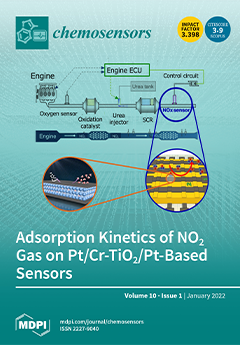Low-molecular-weight acid vapors cause aging and destruction in material processing. In this paper, facile fabrication of novel corn-husk-shaped fullerene C
60 crystals (CHFCs) through the dynamic liquid–liquid interfacial precipitation method is reported. The CHFCs were grown at the liquid–liquid interface between isopropyl alcohol
[...] Read more.
Low-molecular-weight acid vapors cause aging and destruction in material processing. In this paper, facile fabrication of novel corn-husk-shaped fullerene C
60 crystals (CHFCs) through the dynamic liquid–liquid interfacial precipitation method is reported. The CHFCs were grown at the liquid–liquid interface between isopropyl alcohol (IPA) and a saturated solution of C
60 in mesitylene under ambient temperature and pressure conditions. The average length, outer diameter, and inner diameter of CHFCs were
ca. 2.88 μm, 672 nm, and 473 nm, respectively. X-ray diffraction (XRD) analysis showed the CHFCs exhibit a mixed face-centered cubic (
fcc) and hexagonal-close pack (
hcp) crystal phases with lattice parameters
a = 1.425 nm,
V = 2.899 nm
3 for
fcc phase and
a = 2.182 nm,
c = 0.936 nm,
a/
c ratio = 2.33, and
V = 3.859 nm
3 for
hcp phase. The CHFCs possess mesoporous structure as confirmed by transmission electron microscopy (TEM) and nitrogen sorption analysis. The specific surface area and the pore volume were
ca. 57.3 m
2 g
−1 and 0.149 cm
3 g
−1, respectively, are higher than the nonporous pristine fullerene C
60. Quartz crystal microbalance (QCM) sensing results show the excellent sensing performance CHFCs sensitive to acetic acid vapors due to the enhanced diffusion
via mesoporous architecture and hollow structure of the CHFCs, demonstrating the potential of the material for the development of a new sensor system for aliphatic acid vapors sensing.
Full article





